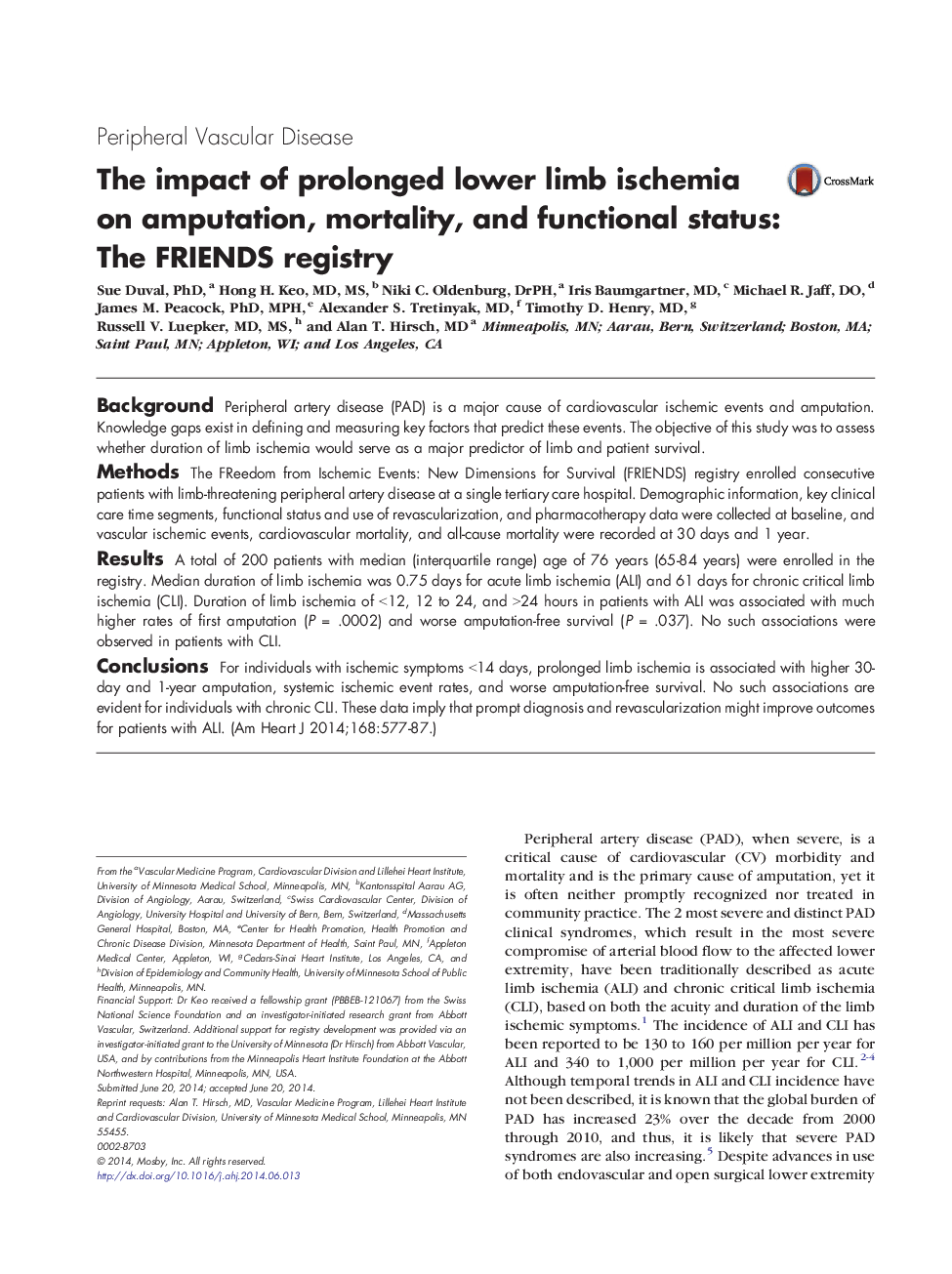| Article ID | Journal | Published Year | Pages | File Type |
|---|---|---|---|---|
| 5928482 | American Heart Journal | 2014 | 11 Pages |
BackgroundPeripheral artery disease (PAD) is a major cause of cardiovascular ischemic events and amputation. Knowledge gaps exist in defining and measuring key factors that predict these events. The objective of this study was to assess whether duration of limb ischemia would serve as a major predictor of limb and patient survival.MethodsThe FReedom from Ischemic Events: New Dimensions for Survival (FRIENDS) registry enrolled consecutive patients with limb-threatening peripheral artery disease at a single tertiary care hospital. Demographic information, key clinical care time segments, functional status and use of revascularization, and pharmacotherapy data were collected at baseline, and vascular ischemic events, cardiovascular mortality, and all-cause mortality were recorded at 30 days and 1 year.ResultsA total of 200 patients with median (interquartile range) age of 76 years (65-84 years) were enrolled in the registry. Median duration of limb ischemia was 0.75 days for acute limb ischemia (ALI) and 61 days for chronic critical limb ischemia (CLI). Duration of limb ischemia of <12, 12 to 24, and >24 hours in patients with ALI was associated with much higher rates of first amputation (P = .0002) and worse amputation-free survival (P = .037). No such associations were observed in patients with CLI.ConclusionsFor individuals with ischemic symptoms <14 days, prolonged limb ischemia is associated with higher 30-day and 1-year amputation, systemic ischemic event rates, and worse amputation-free survival. No such associations are evident for individuals with chronic CLI. These data imply that prompt diagnosis and revascularization might improve outcomes for patients with ALI.
